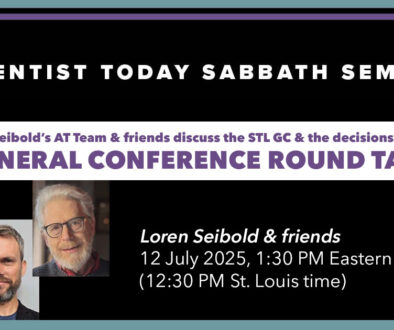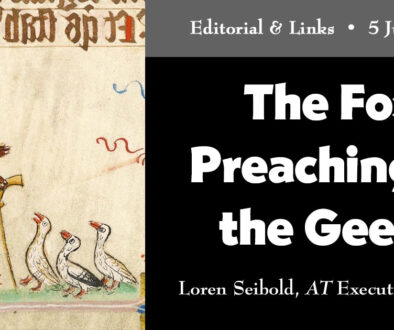Ted Wilson and the Trajectory of the Adventist Church
by Ronald Lawson | 13 February 2019 |
We have uploaded two closely-related papers to my web-site. The title of the first is “From Sect Towards Denomination: Tracing the Trajectory of Seventh-day Adventism in the USA over Time.”
Many Adventists become upset when Adventists are referred to as a “sect.” (One such uproar occurred on Facebook recently.) This is because the word is used differently by different groups in society, and the upset Adventists probably do not realize this. The common referent on the street has a negative connotation: a sect is regarded as a peculiar religious group that has unusual behavioral rules and that disturbs people in their homes on weekends in attempts to convert them to their group, which is probably seen by members as the one true church. In countries where one religious group has the support of the government, others that persist nevertheless may be dubbed a “sect,: Evangelicals also use the word negatively to refer to groups which hold beliefs that are not sufficiently orthodox, whose emphases may stress subsidiary doctrines and neglect what Evangelicals hold to be central. However, such “sects” are clearly not dangerous as is implied when the term “cult” is invoked. That is, when the word is used by all these groups it has a somewhat negative tone. Sociologists, however, try to describe without judging—that is, for them, “sect” does not have a negative connotation. As used by many sociologists in recent decades, it suggests that the groups to which the term sect is applied are in high tension with society, unlike “denominations,” which are much more in tune with society, and which may be referred to as “the mainline” religious groups. Moreover, there is considerable evidence that religious groups often begin as sects, uneasy with society, government, and other religious groups, but over time this tension is typically gradually reduced, until they become at ease with all such sectors of society, and thus emerge as denominations.
This paper examines the history of American Adventism, and discovers, and argues, that Adventism, like so many other religious groups, has moved over time from sect towards denomination—it may not yet be “mainline,” but has become in many ways “denomination-like.” The paper’s abstract summarizes its thesis:
Seventh-day Adventism emerged from the Millerite Movement, which had preached throughout the American Northeast that Christ would return in 1844, after the parent movement fragmented following the “Great Disappointment.” The new group was marked by considerable tension with its surrounding culture during its early decades, and was therefore, in terms of the definition promulgated by Stark and Bainbridge, highly sectarian. However, the Adventist Church in the US has been following a well-defined trajectory from sect towards denomination for the past century: it has reduced tensions with its surrounding environment by removing antagonisms between itself and the state and other religious organizations, and its members have become less peculiar in their lifestyles and beliefs and more integrated into society. The process continues, but it is now so advanced that the Adventist profile imitates that of mainline Protestant denominations in some important ways. This paper provides an overview of the trajectory taken by Adventism in the US. It applies and tests Church-Sect Theory as it now stands.
The title of the second paper, written in 2012, is “Uni-Directional or Bi-directional? Sect-Denomination Theory and the Case of Seventh-day Adventism.” Because the usual trajectory of a sect is towards denomination, it has usually been assumed that that is the usual direction taken by sects, and that there is no alternative available. However, Conservatives often wish to reverse such a trajectory. For example, when Robert Pierson announced that he was retiring, and gave his last address to the General Conference Committee in 1978, he had just become aware of the theory, and had realized that Adventism was becoming less sectarian, which bothered him greatly: “Brethren and sisters, this must never happen to the Seventh-day Adventist Church! … This is God’s last church with God’s last message!”
In fact, if a group can move in one direction along a trajectory, it is possible, even if not likely, for it to reverse course and move in the other direction. In 1950, the new Mormon president became very concerned that his people were losing their distinctiveness during the Eisenhauer administration, and set out to apply the brakes to the process. This policy remained in place until the 1990s, and if it did not reverse the Mormon trajectory, it did slow it considerably.
In 2010 Ted Wilson became the President of the Adventist General Conference, and he seems even more intent on reversing the sect-to-denomination trajectory. He has placed renewed emphasis on the authority of the writings of Ellen White and the doctrine of the Remnant, and he has revised the fundamental belief that addresses Creation so that it now states that God created the world 6000 years ago in six contiguous 24-hour days. To raise just one possible scenario, if Wilson insists that the science departments at Adventist universities teach that evolution is false and the world was created by fiat so recently, and this then threatens their accreditation, will he hold to his course? Will the church follow him or rebel? This is likely to be tested in the next few years,
Those who would like to read the whole of these papers are invited to visit my website.
 Ronald Lawson is a lifelong Seventh-day Adventist, and a sociologist studying urban conflicts and sectarian religions. He is retired from Queens College, CUNY.
Ronald Lawson is a lifelong Seventh-day Adventist, and a sociologist studying urban conflicts and sectarian religions. He is retired from Queens College, CUNY.




